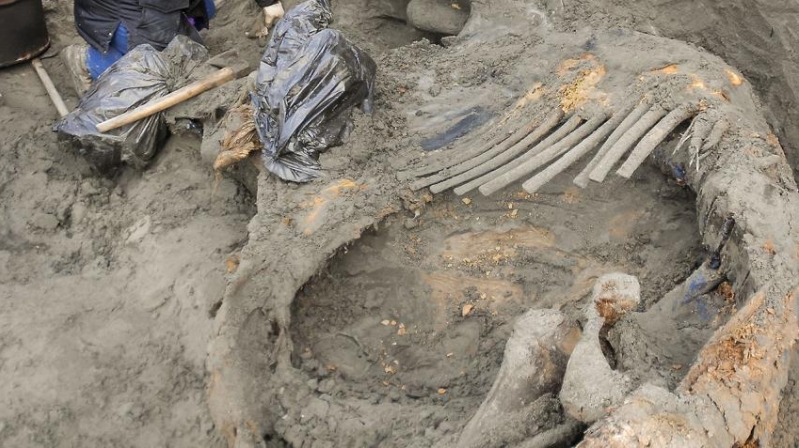
Russian researchers contributing to the journal Science state humans were in the Arctic region as early as 45,000 years ago, which is up to 15,000 years earlier than researchers always have assumed. Distinctive injuries on a frozen mammoth carcass in Siberia now represent the first known human presence in the area.
These researchers are going by human weapon injuries on the bones of a 15-year-old male mammoth. Radiocarbon dating of the bones puts humans well north of the Arctic Circle 45,000 years ago, scientists report in the Jan. 15 Science.
The find shows that humans worked out coping mechanisms to the Arctic's extreme cold and sunless winters much earlier than experts thought, said Robin Dennell, a paleoanthropologist at the University of Sheffield in England who wasn't involved in the mammoth work, in Science News magazine. They had to adapt to the cold to traverse Siberia and Beringia on their way to the Bering Strait's land bridge, which they crossed to enter the Americas.
The research team pulled the mammoth from a frozen coastal bluff in the central Siberian Arctic. Carbon dating of the surrounding sediment and of a leg bone pinned the mammoth's age at 45,000 years old. Human weapons such as spears probably caused the damage that killed the mammoth. Its eye sockets, ribs, and jaw had been battered, and one spear-point had left a dent in its cheekbone - perhaps a missed blow aimed at the base of its trunk.
At 66.32° N latitude, the Arctic Circle just touches the top of Canada and Russia. Except for one site in eastern Siberia, also reported by the team in the new paper, other far-north archaeological sites 40,000 years or older sit around 55° N, just south of the Arctic Circle.
"The mammoth is almost 72° North," stated paper co-author Vladimir Pitulko, an archaeologist at the Institute for the History of Material Culture of the Russian Academy of Sciences in St. Petersburg. He points out that is a significant latitudinal difference between the old human habitation sites south of the Arctic Circle and the new mammoth find.
"The dating is compelling. It's likely older than 40,000," said Douglas Kennett, an environmental archaeologist who is co-director of the Pennsylvania State University, University Park's accelerator mass spectrometry facility. However, he would like the Russian team to report the method used to rule out contamination of the bone collagen for dating-and confirmation of the dates on the bone by another lab, because "the date is so critical for the significance of this discovery."
Dennell said what scientists do not still know is whether humans living this early in the Arctic "was a successful long-term adaptation or a short-lived heroic failure."
Surviving at those latitudes requires highly specialized technology and extreme cooperation, agree scientists. That implies the humans associated with this find were modern humans, rather than Neanderthals or other early members of the human family. "If these hunters could survive in the Arctic Circle 45,000 years ago, they could have lived virtually anywhere on Earth," said Ted Goebel, an archaeologist at Texas A&M University, College Station.







